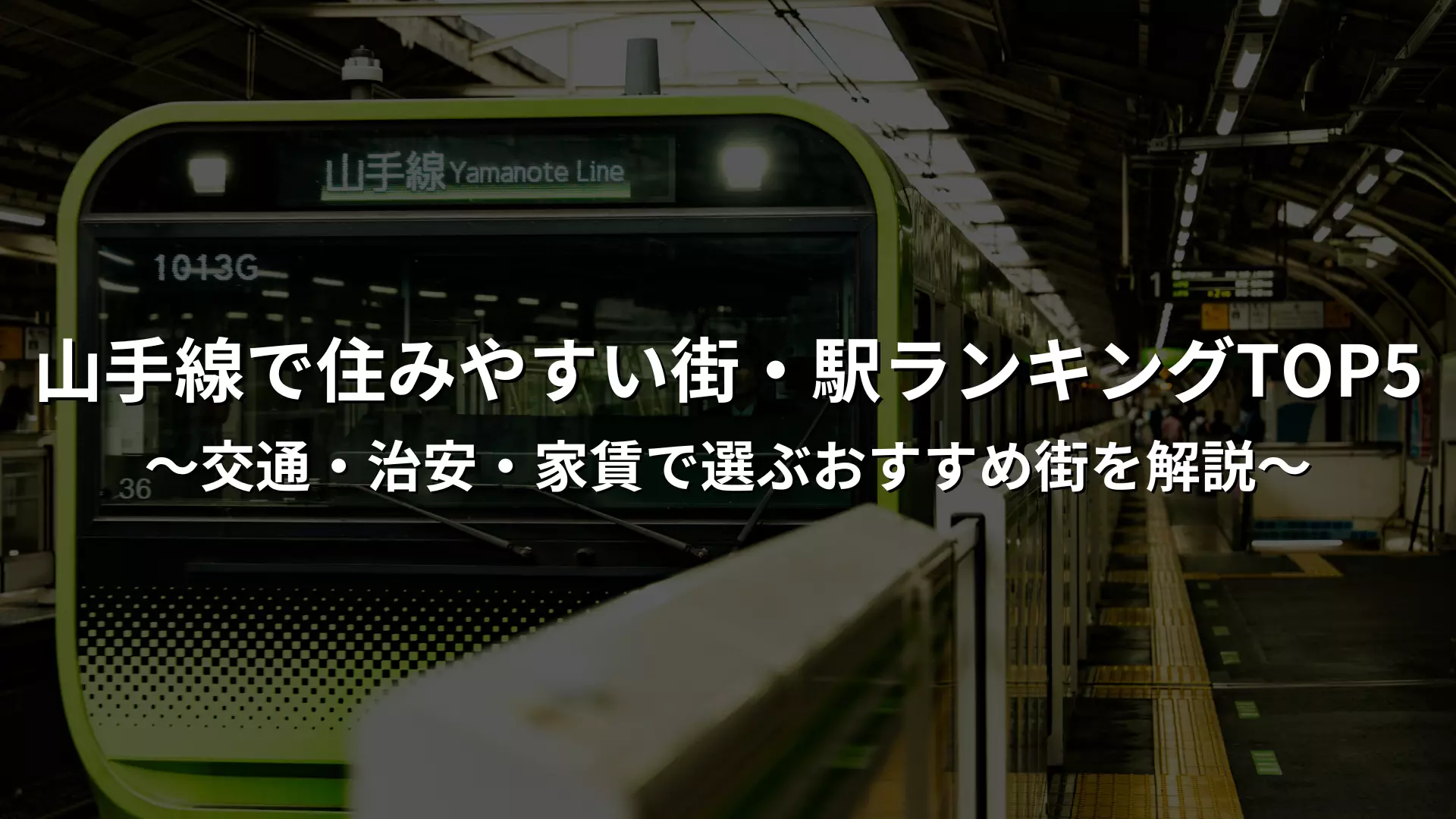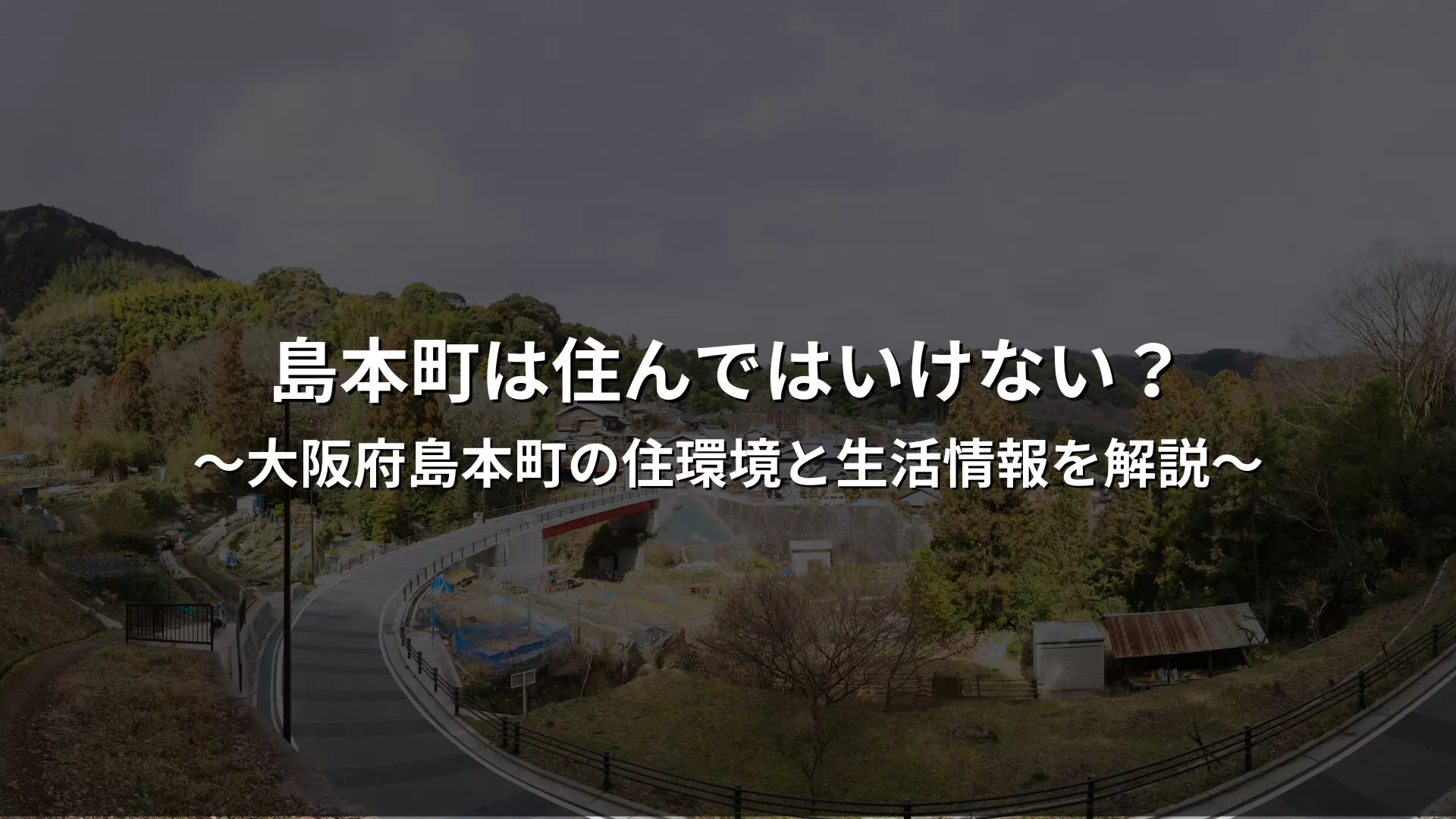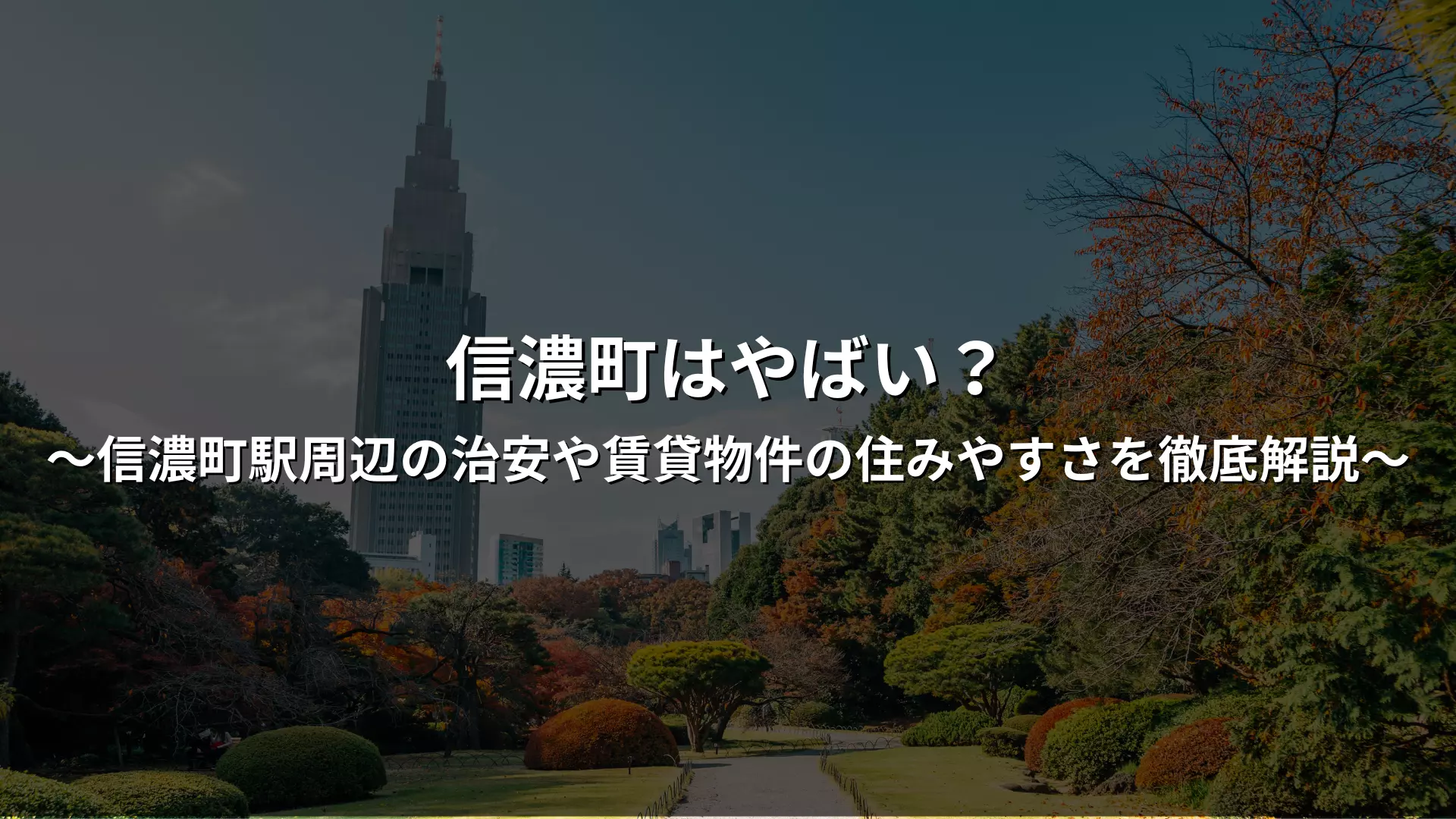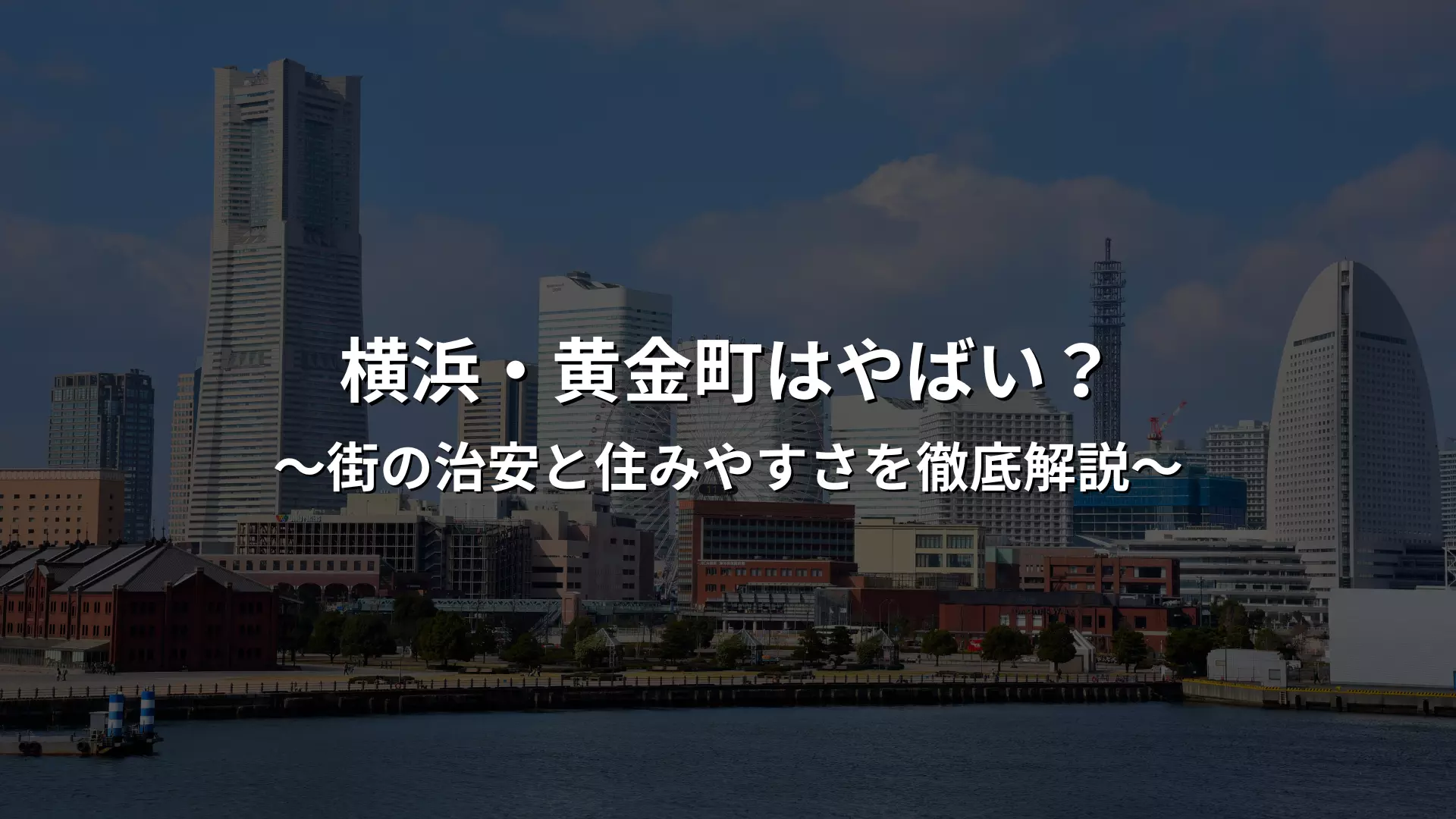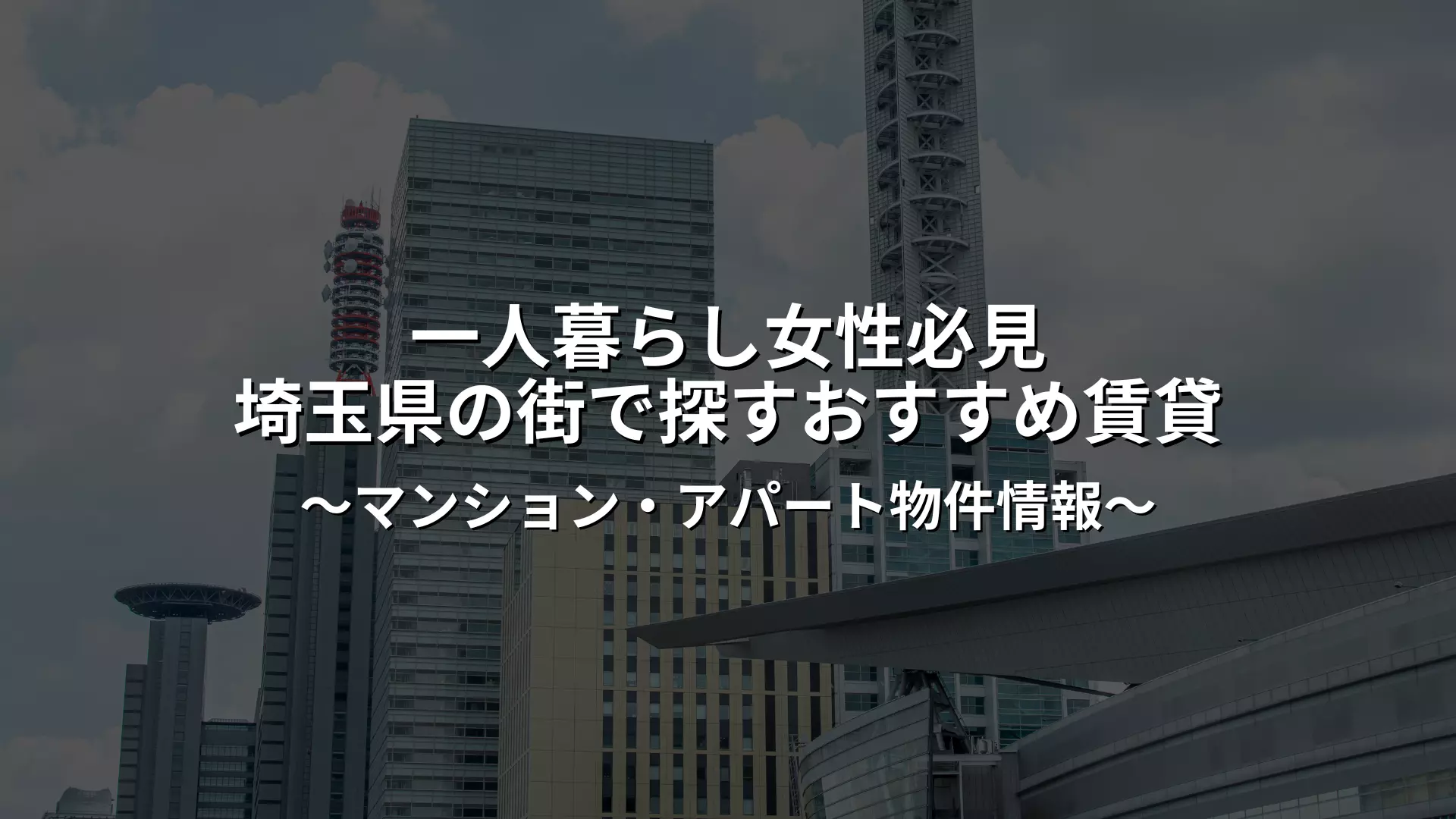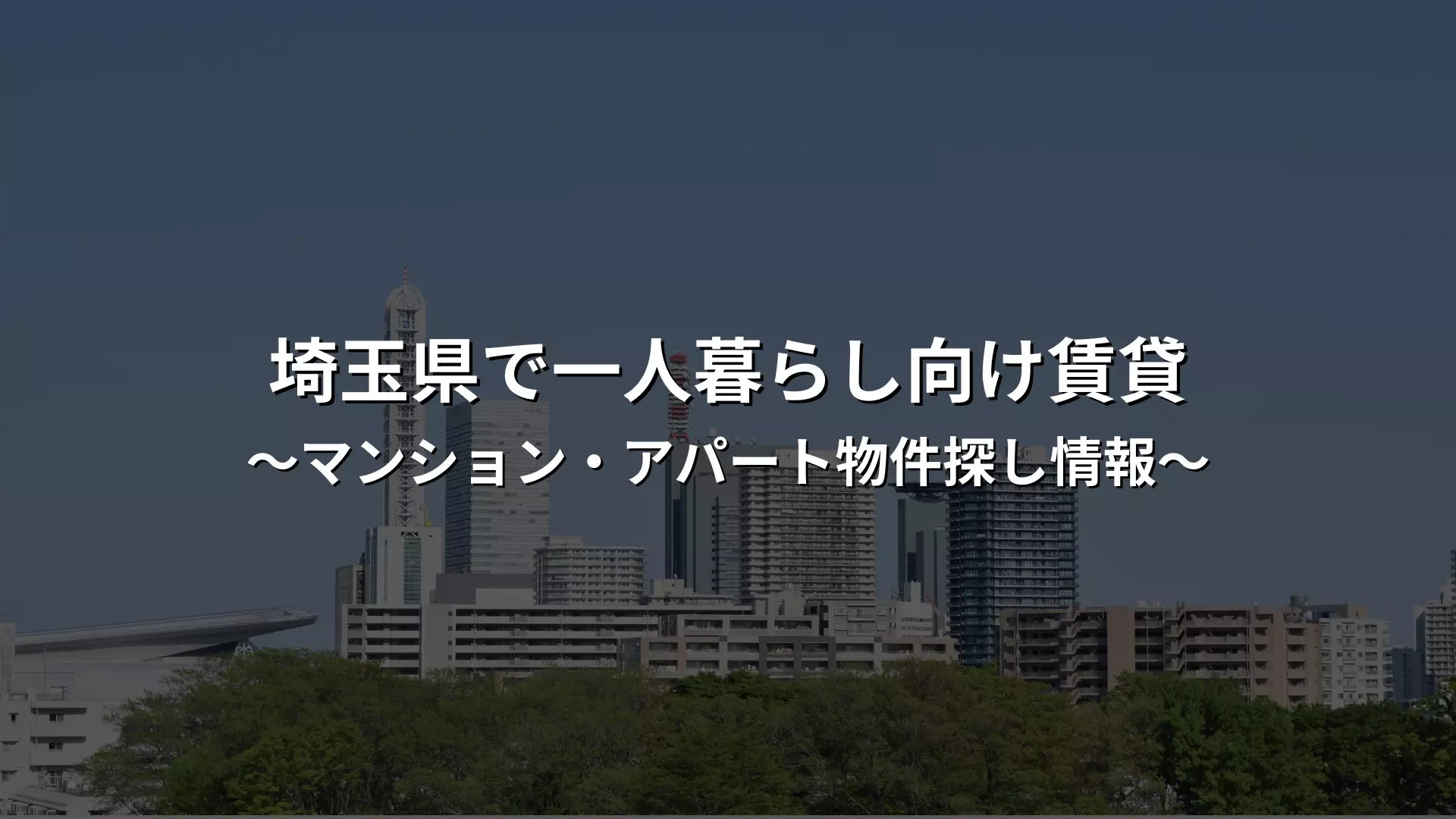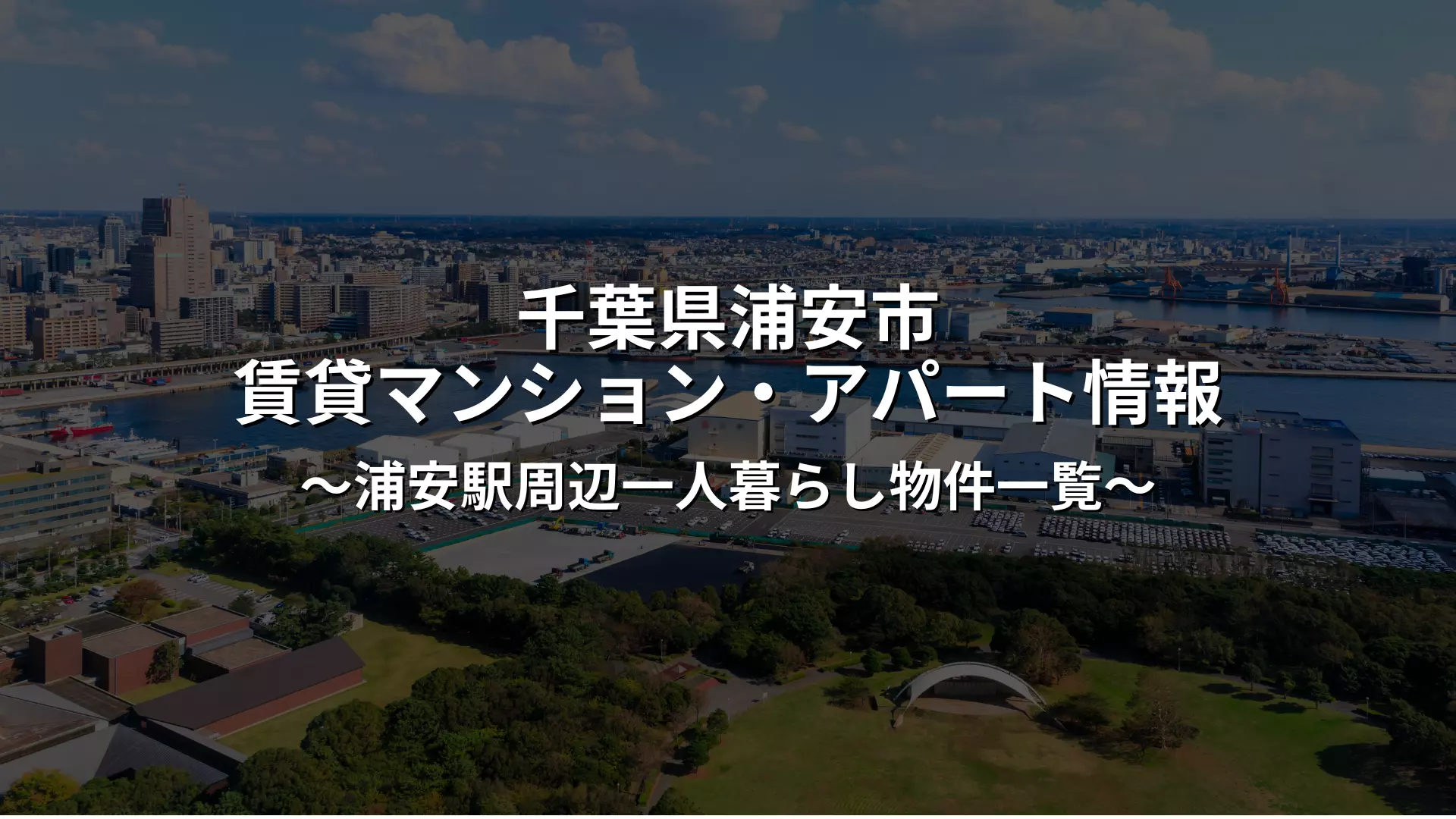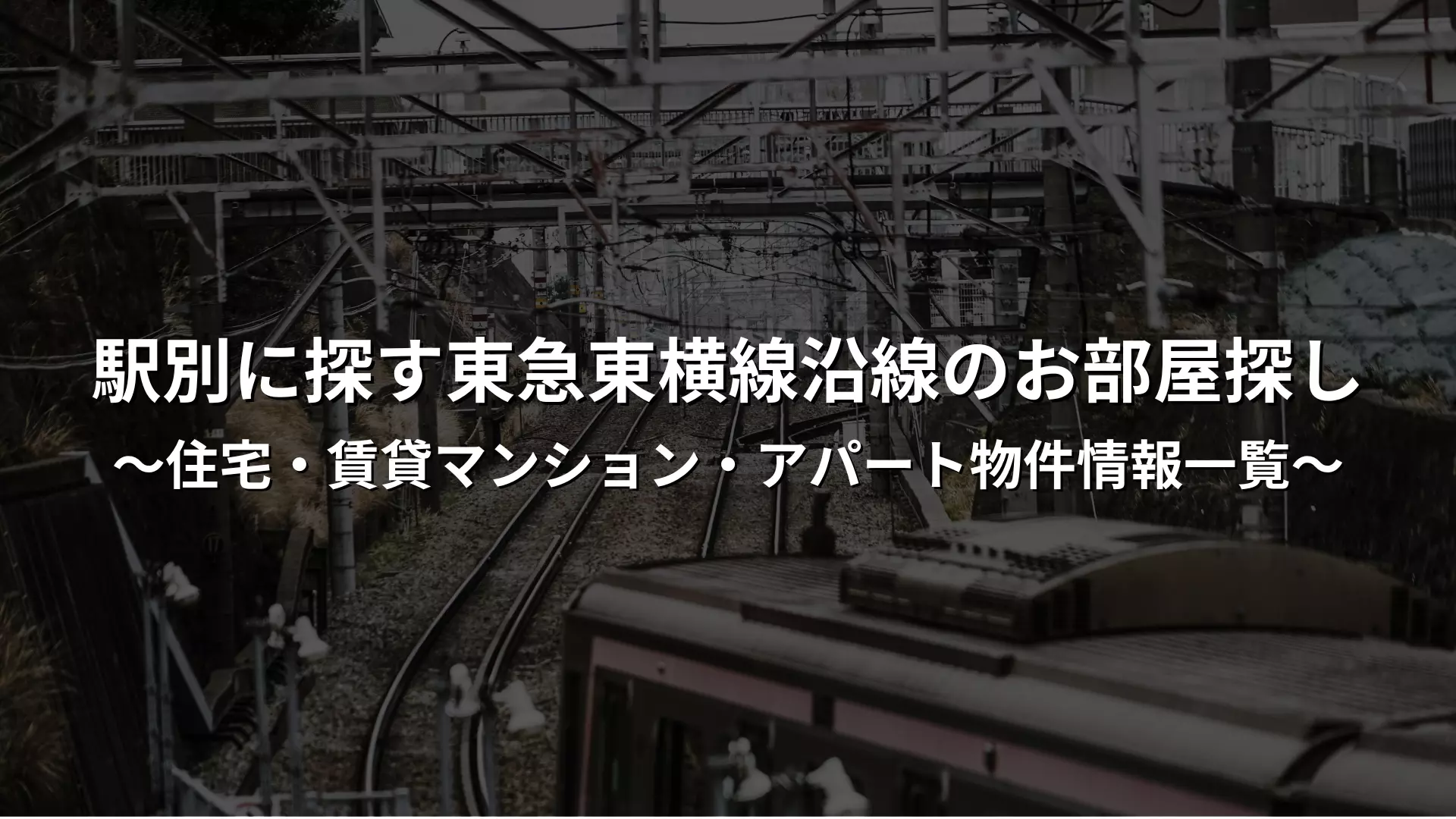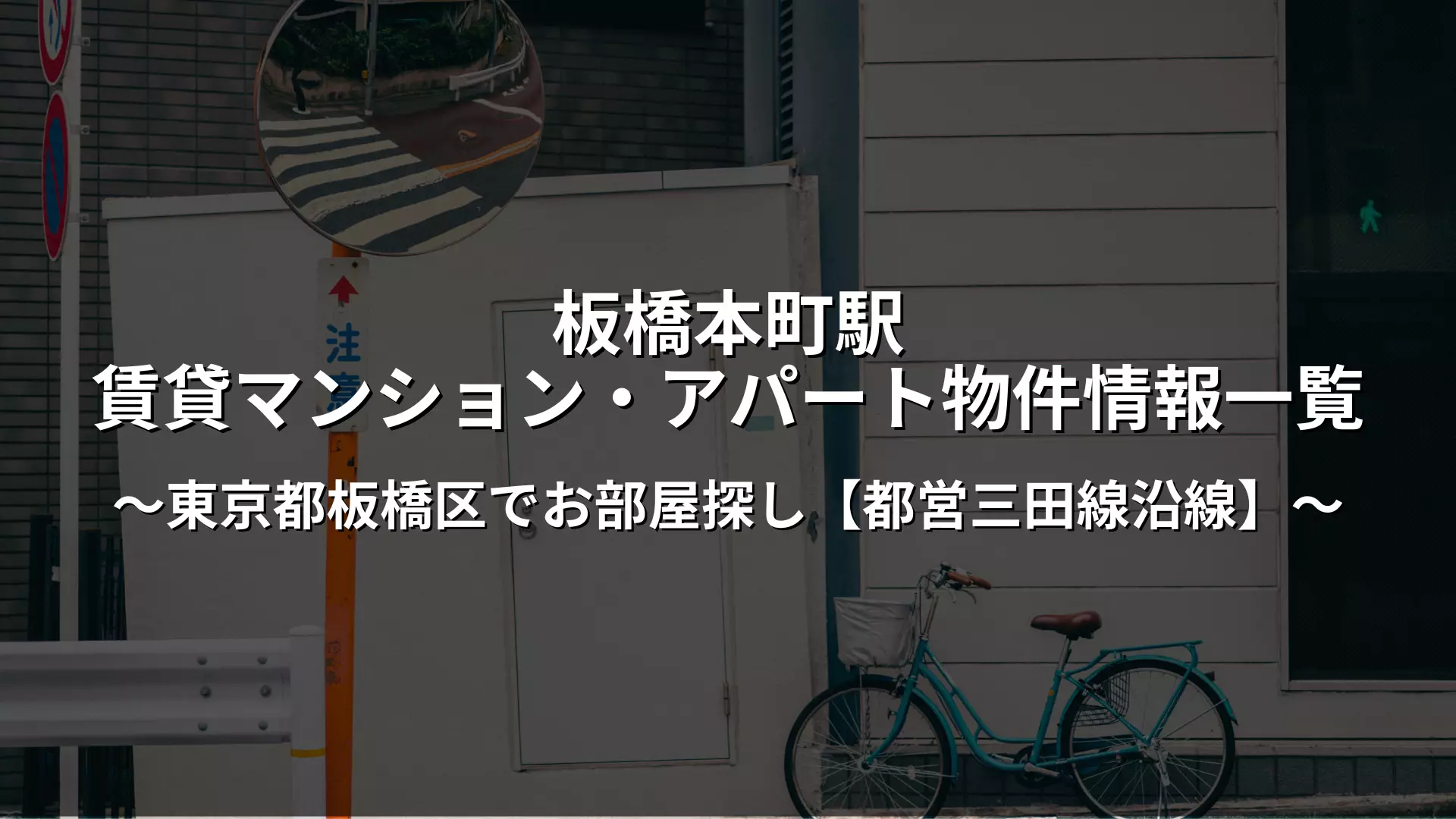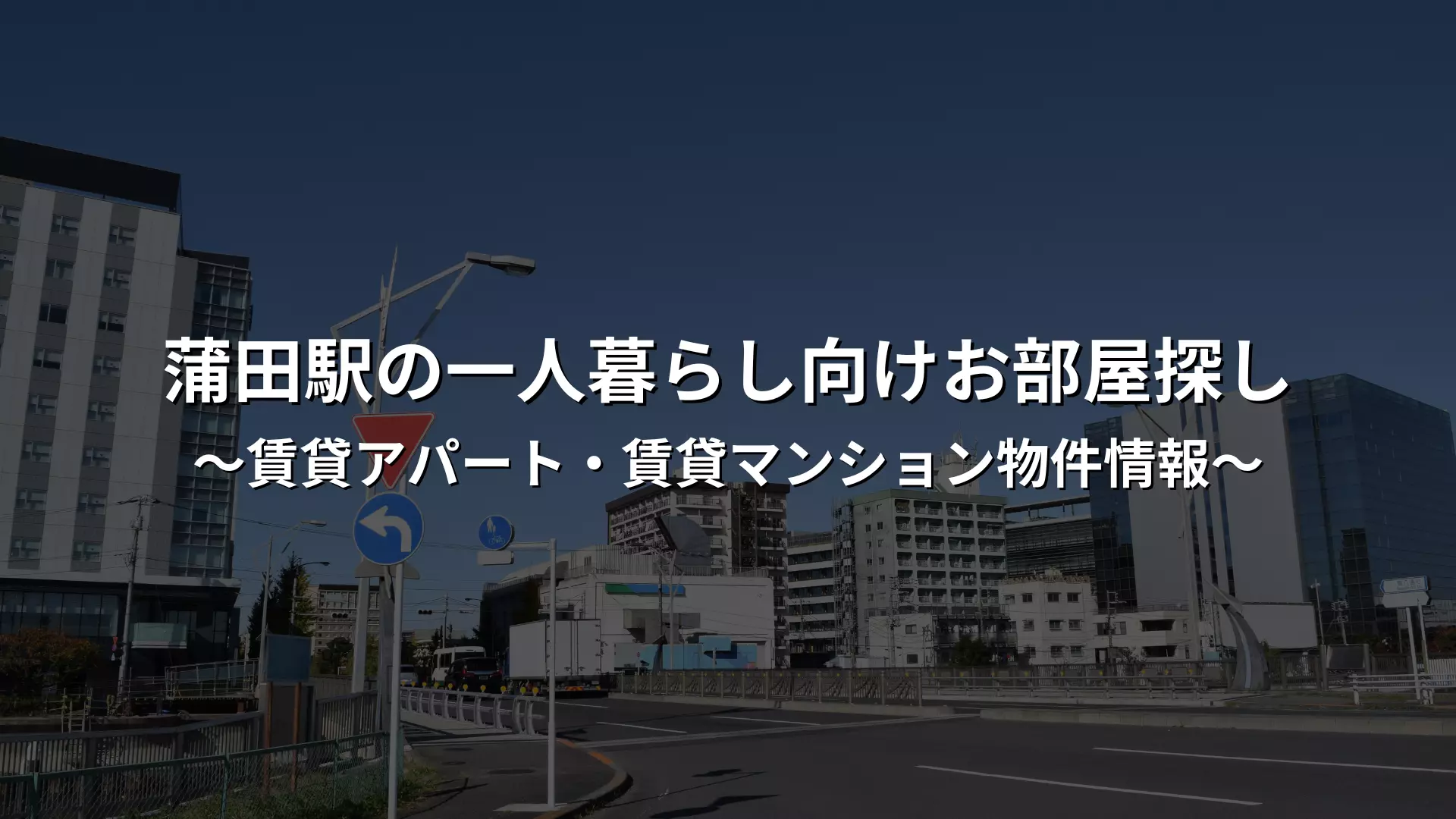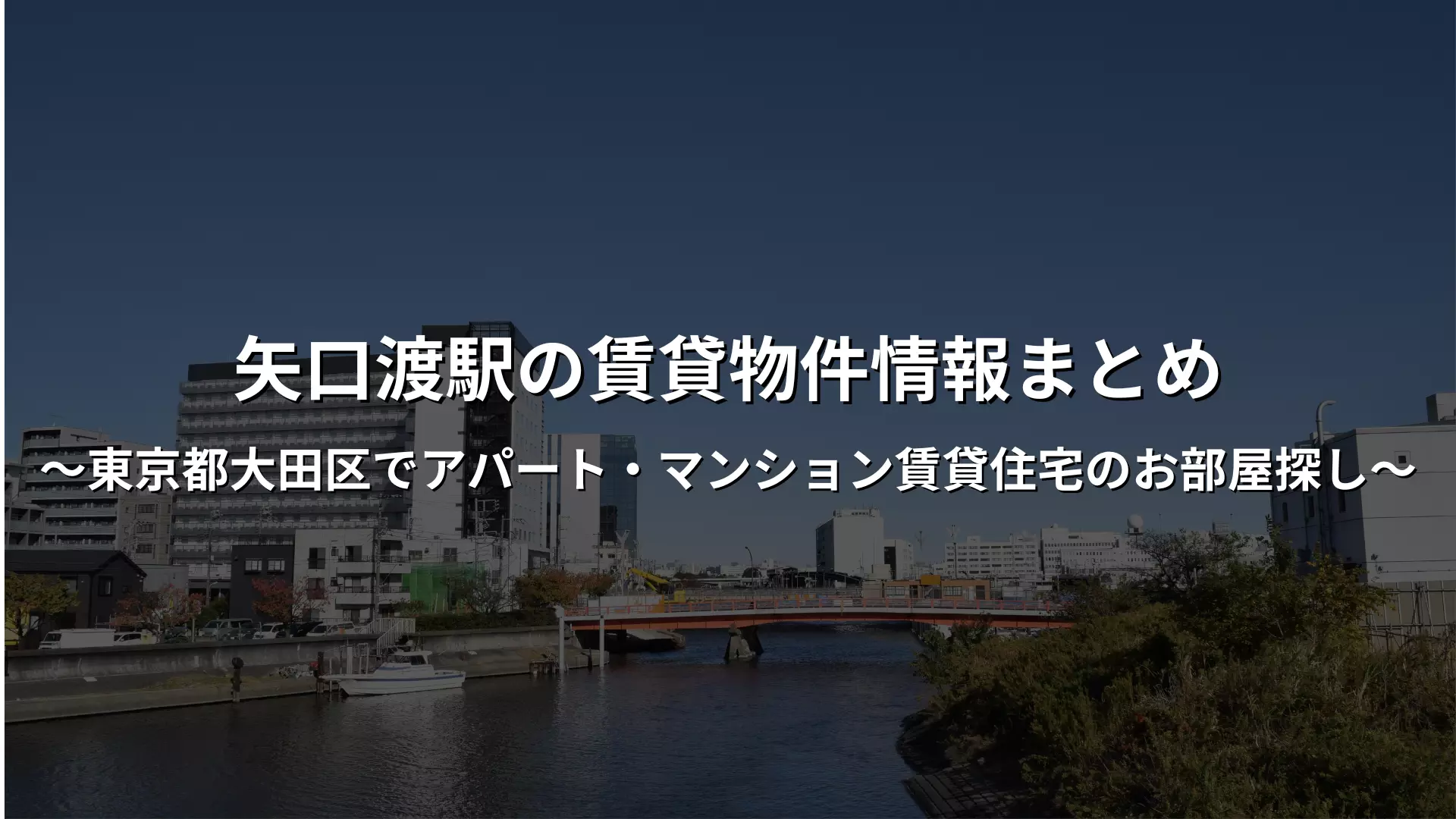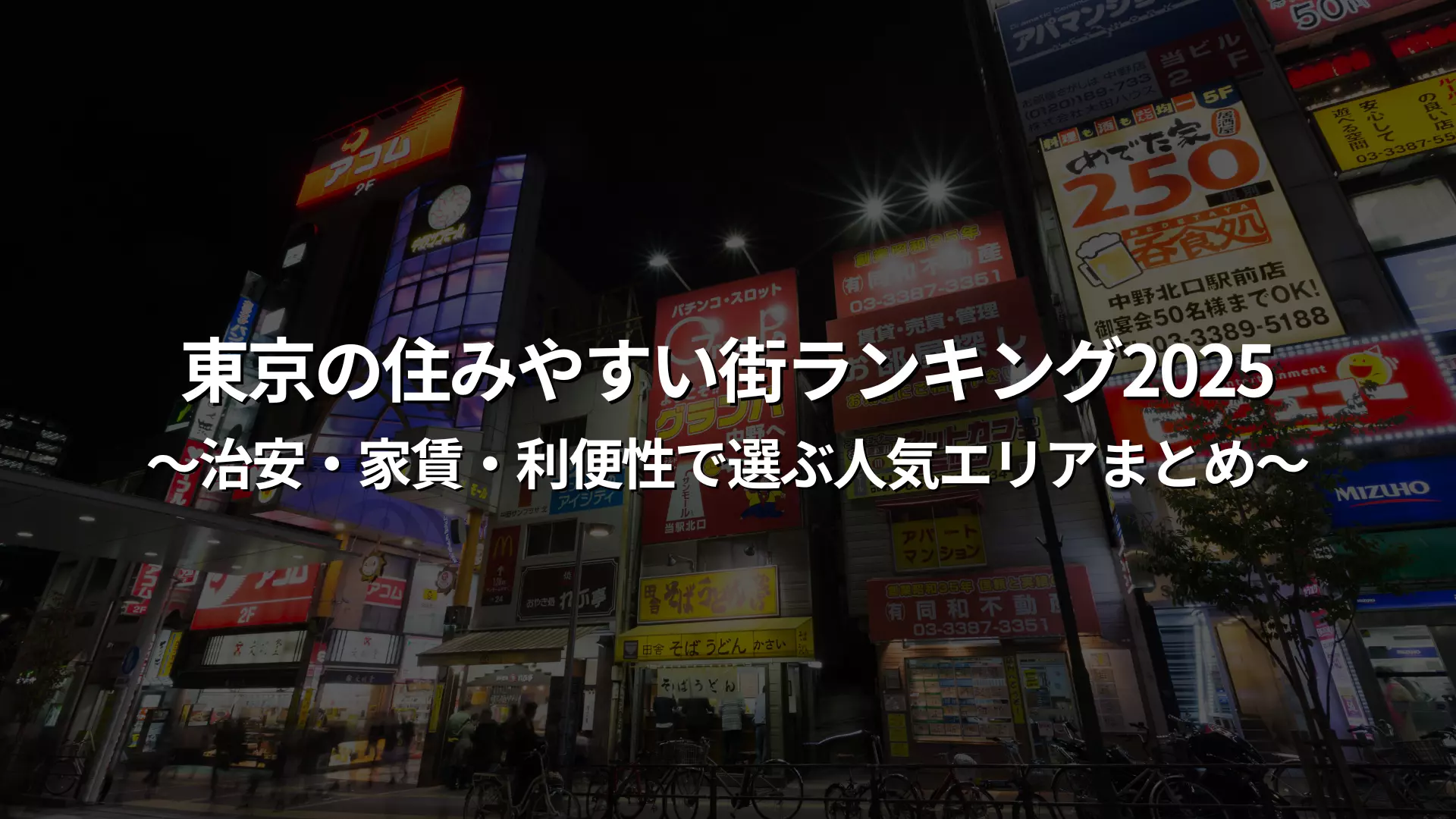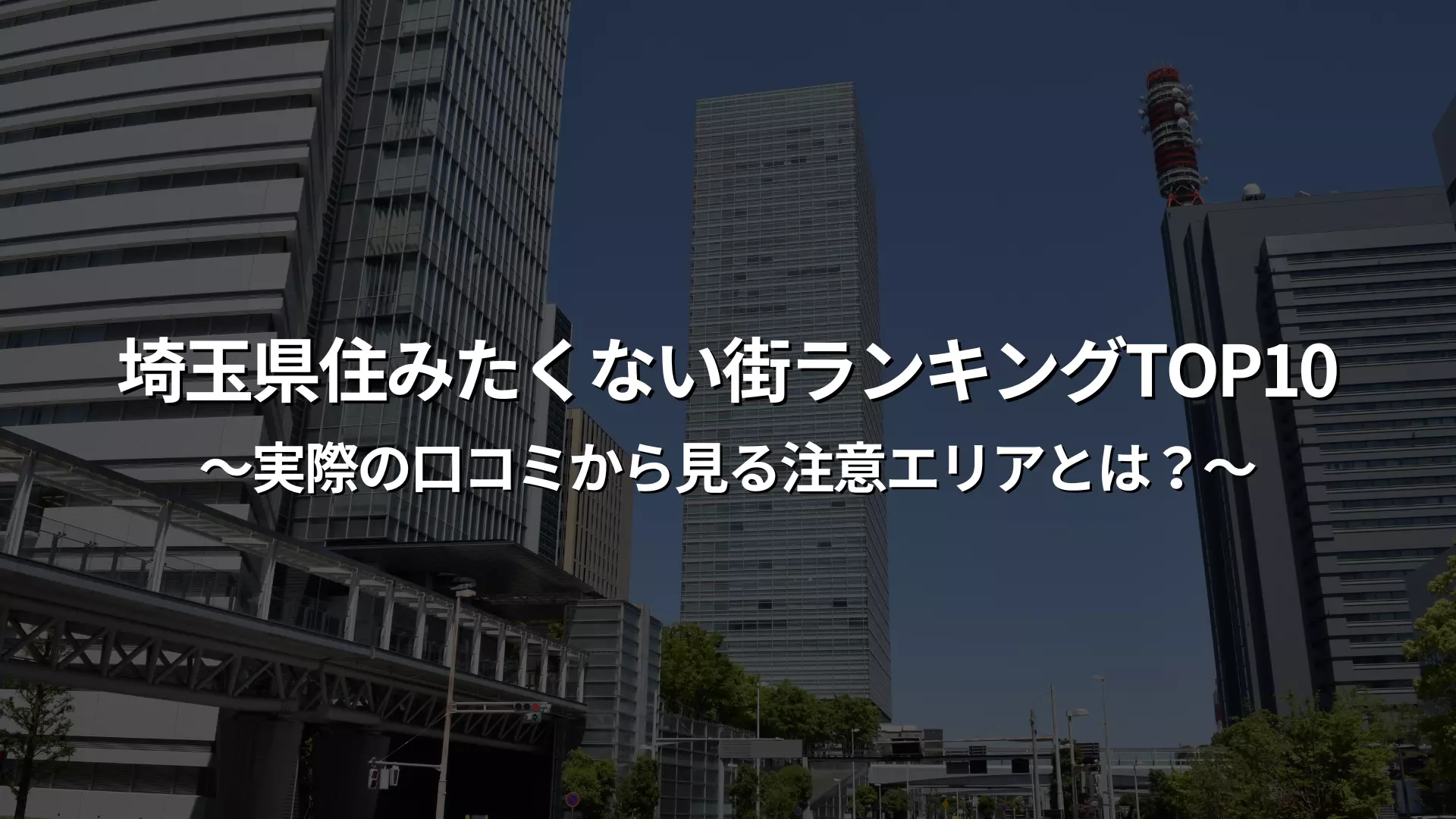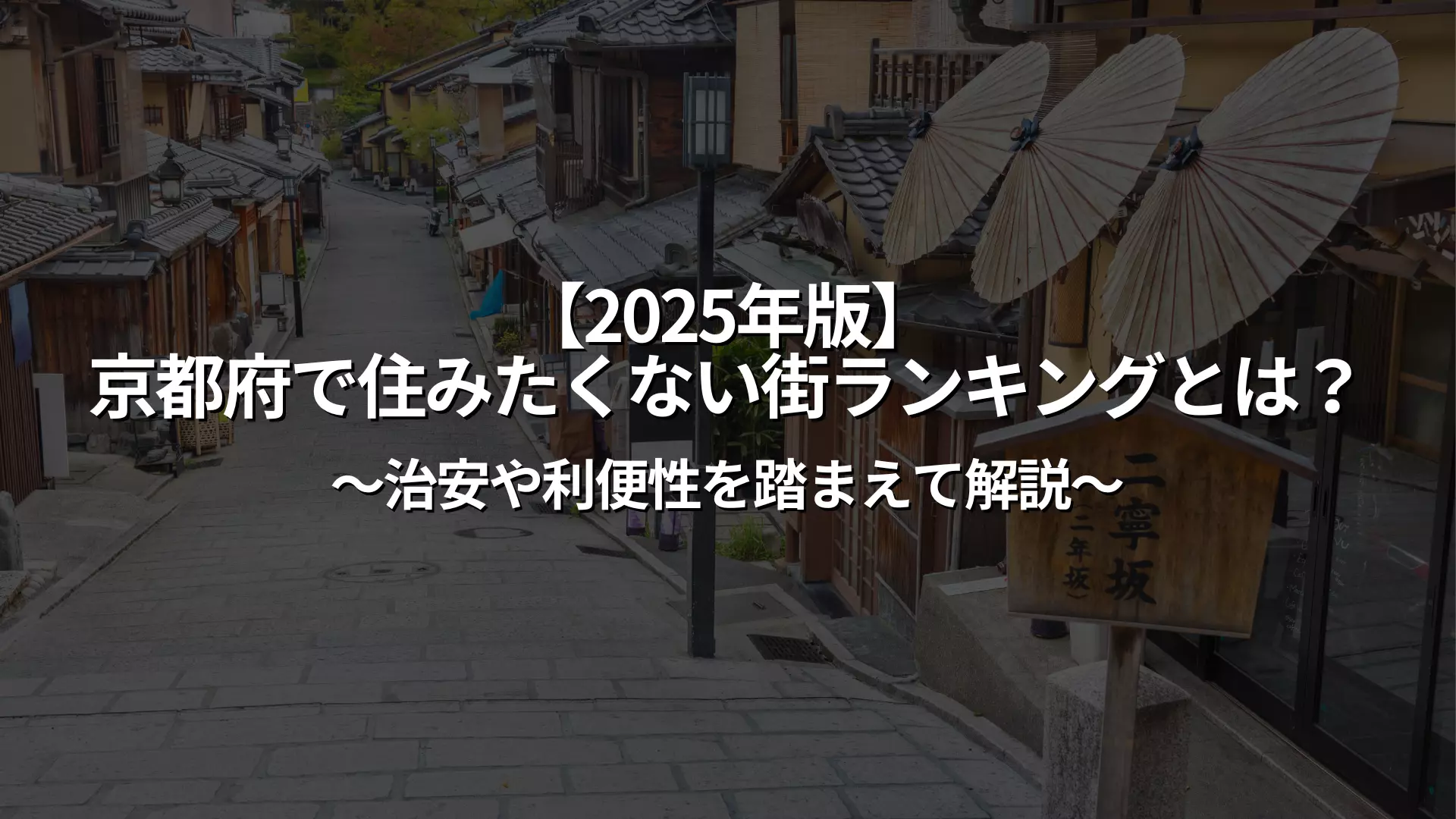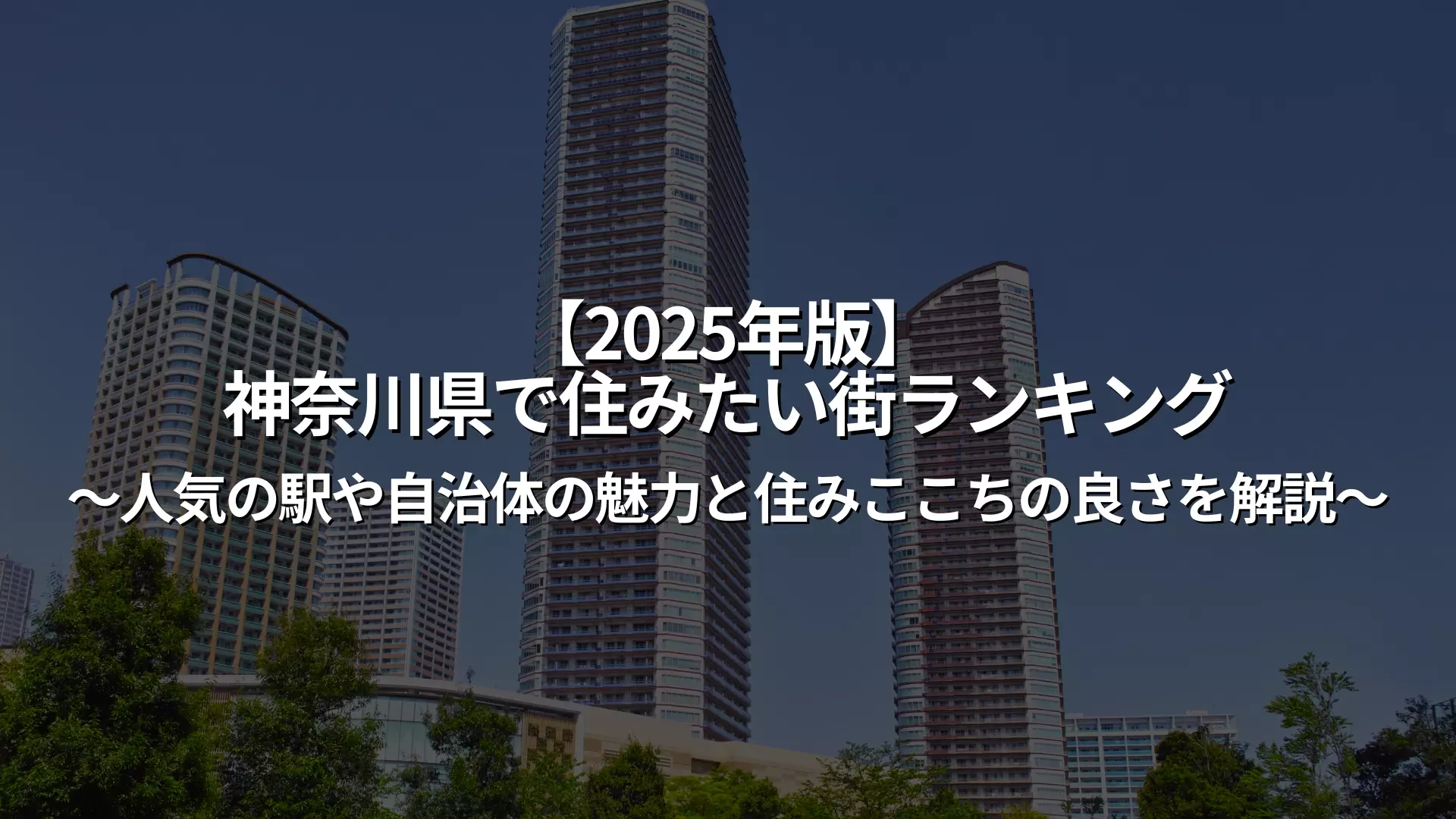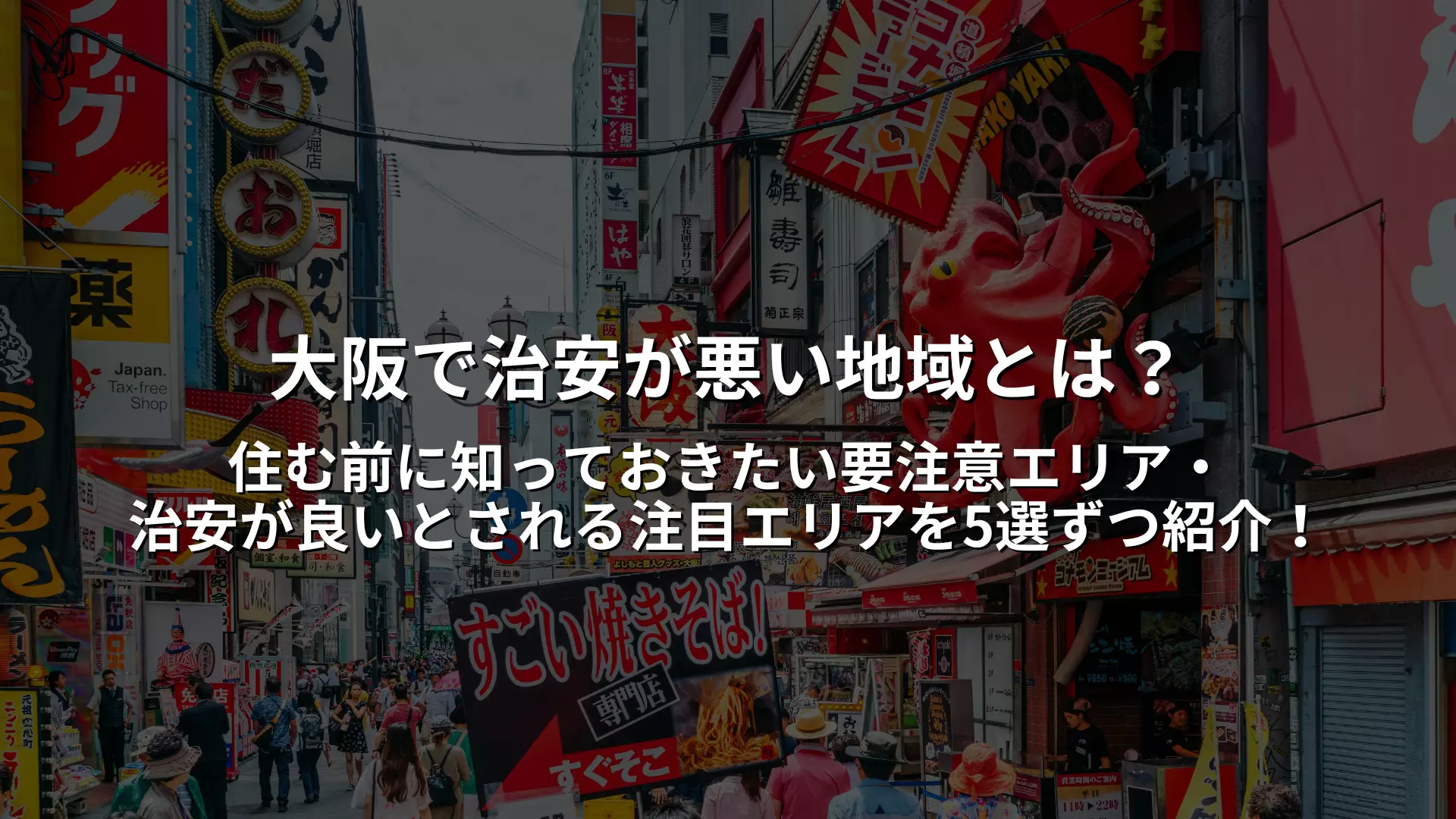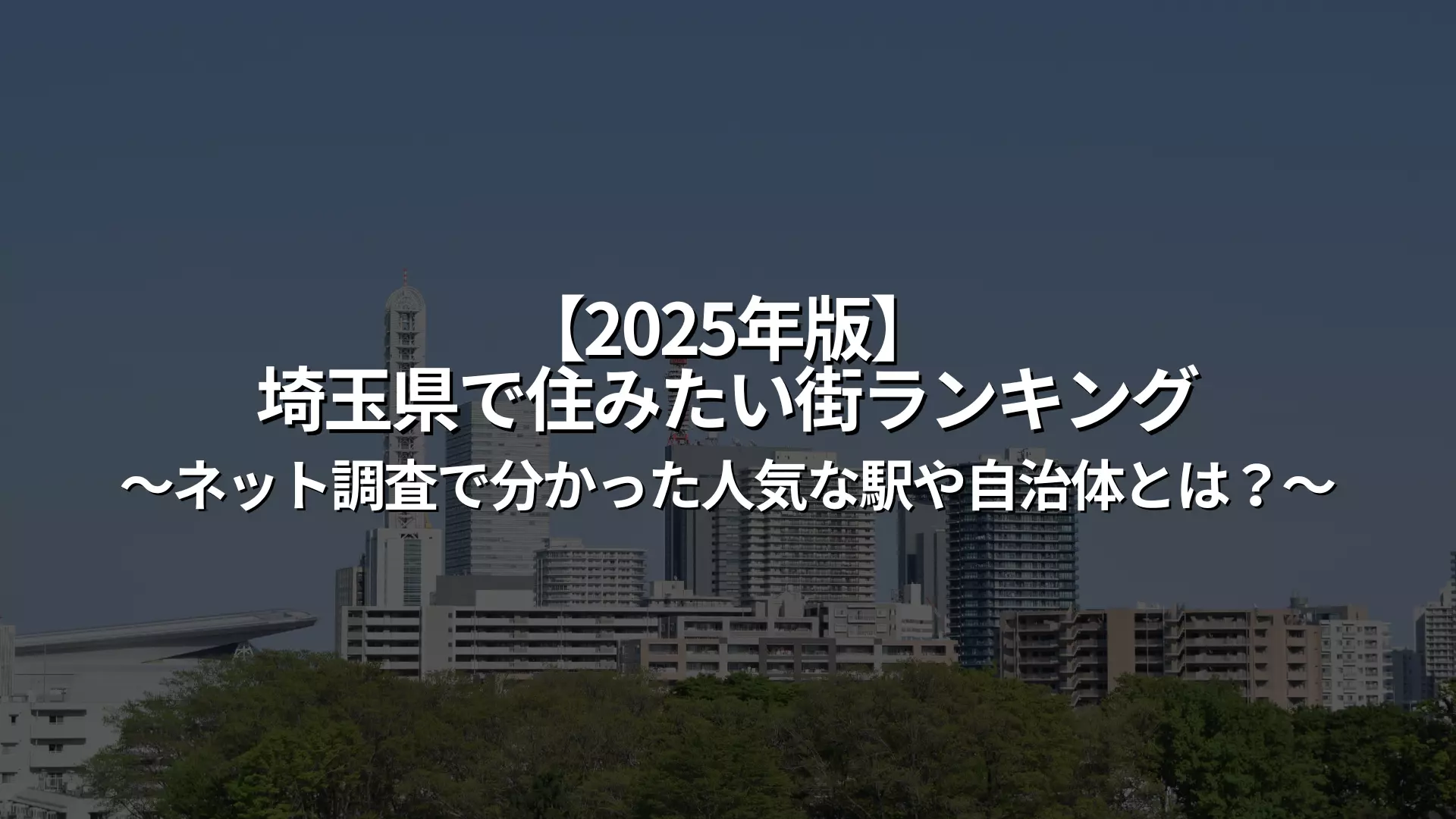Basic information about the Yamanote Line
The Yamanote Line, Tokyo's leading circular railway line, is chosen by many people as a base for commuting, going to school, and living due to its convenience as it circles the city center.When choosing a place to live, the Yamanote Line is dotted with many "livable stations," and people are paying attention to the accessibility and the quality of the surrounding environment.
Below, we will start with some basic information about the Yamanote Line.
Yamanote Line route information
The Yamanote Line is JR East's circular line that runs through the center of Tokyo, with a total of 30 stations and a circumference of approximately 34.5 km. It passes through major terminal stations such as Shinagawa, Shibuya, Shinjuku, Ikebukuro, and Ueno, making it easy to access anywhere in Tokyo and offering plenty of transfer routes. There are also many trains running, with trains arriving every 3-4 minutes even during morning and evening rush hours, making it highly convenient for commuting to work or school.
Each station on the Yamanote Line has its own unique charm, allowing for a diverse lifestyle with shopping, dining, culture, and more. However, as areas around terminal stations can be crowded and rents can be high, quiet residential areas and stations undergoing redevelopment are gaining attention as "livable stations."
We will tell you about the first and last trains based on Osaki Station.
- Towards Meguro, Shibuya and Shinjuku: First train leaves at 4:28, last train leaves at 0:24
- Shinagawa, Tokyo, Ueno: First train leaves at 4:30, last train leaves at 0:22
As you can see, the first train runs from early in the morning until the last train runs until 12:30, making it a popular choice for many people. During rush hour, trains run every 2-3 minutes, making for an overwhelming number of trains and a stress-free journey.
Characteristics of the Yamanote Line
The Yamanote Line is a JR East circular line that circles the 23 wards of Tokyo, and is a popular line that stands out for its convenience. It covers the major terminal stations in Tokyo, and passes through many popular residential areas, so there are many "livable stations" scattered along the line.
Here we will explain the characteristics of the Yamanote Line and why it is such an excellent living environment.
The Yamanote Line covers all major stations in Tokyo.
The biggest appeal of the Yamanote Line is that it covers almost all of Tokyo's major areas.
The route passes through central Tokyo terminal stations such as Shinjuku, Shibuya, Ikebukuro, Shinagawa, Ueno, and Tokyo Station, as well as centers of business, shopping, and culture such as Akihabara, Ebisu, and Meguro, making it extremely convenient for commuting to work or school, or for going out on the weekends.
Additionally, with transfers to multiple lines at each station, access to other lines is smooth. This means that simply living along the Yamanote Line makes travelling throughout Tokyo extremely efficient. When it comes to urban living, transport convenience is an important factor that determines how livable a place is. The Yamanote Line is a line that truly meets this requirement.
The Yamanote Line has many trains running
As mentioned earlier, the Yamanote Line operates at high frequency, with trains running every 2-3 minutes during morning and evening rush hours, and every 4 minutes on average during the day. This frequency is one of the highest in Tokyo. Even during peak hours, the next train arrives quickly, reducing the stress of waiting and allowing for comfortable travel.
Furthermore, the circular service allows you to reach your destination from either the inner or outer loop, which helps prevent missed stops and time loss. Another advantage is that if a train malfunction occurs, you can recover by taking a different route.
This stability and flexibility of service is a great source of peace of mind for people who use trains on a daily basis, and is one of the reasons why areas along the Yamanote Line are considered "easy to live in."
There are many livable towns along the Yamanote Line
When you hear the Yamanote Line, you may think of a bustling city center, but in fact, there are many "livable towns" that are popular residential areas.
For example, Mejiro and Komagome are attractive for their calm atmosphere, abundance of greenery, and good public safety. They are popular with students, families, and women living alone.
Additionally, Tabata and Otsuka are undergoing redevelopment and are attracting attention as areas that offer a good balance between convenience and living environment. Supermarkets, drugstores, cafes, and other stores are located in front of the station, so you can find everything you need for daily life within walking distance.
Although rents along the Yamanote Line are often thought of as being high, you can find properties with good value for money if you choose the right area. For those who want a place that is both convenient for commuting and comfortable to live in, the Yamanote Line is the perfect choice.
Search for a room
Only furnished properties with appliances are listed!
Top 5 places to live along the Yamanote Line
Along the Yamanote Line, there are many desirable neighborhoods that combine the convenience of central Tokyo with a comfortable living environment. In addition to areas around terminal stations, there are also many quiet residential areas and areas attracting attention for redevelopment, making it appealing to choose a neighborhood that suits your lifestyle.
Here we introduce a ranking of the latest stations on the Yamanote Line that are considered particularly "livable."
No. 1: Gotanda, Shinagawa Ward
The number one station on the Yamanote Line that people want to live in is Gotanda, located in Shinagawa Ward.
With excellent access to major areas such as Shibuya and Shinagawa, it is an ideal location for business people working in the city center. There are supermarkets, convenience stores, restaurants, gyms, clinics and other facilities around the station, so you will hardly feel inconvenienced in your daily life.
Redevelopment is also underway, with the station building "Remy Gotanda" and surrounding commercial facilities. Although it has an image of being a bar district, a short walk away you'll find a quiet residential area with relatively reasonable rents for studio and 1K apartments.
It is becoming extremely popular as an area that offers good value for money despite being in the city center, and strikes a good balance between convenience and living environment.
2nd place: Tamachi, Minato Ward
Coming in second place is Tamachi, which has good access to business districts such as Shinagawa, Tokyo, and Shimbashi, making it a popular area for office workers and students.
Keio University's Mita Campus is within walking distance of the station, making the area a popular student town.
The area has been redeveloped with the addition of the msb Tamachi shopping mall directly connected to the station, creating a clean and sophisticated atmosphere. Although it is part of Minato Ward, the surrounding residential areas are peaceful and safe.
Furthermore, the Toei Asakusa Line and Mita Line are accessible via the adjacent Mita Station, making travel within Tokyo extremely smooth. While rent is a little on the higher side, it is a highly complete area that combines everything from a comfortable living environment to convenient transportation.
3rd place: Komagome, Toshima Ward
Komagome, located in Tokyo's Toshima Ward, comes in third place if you're looking for a quiet living environment on the Yamanote Line. This area offers a calm atmosphere away from the hustle and bustle of the city, and is attractive for its lush greenery. It's particularly close to historic gardens like Rikugien Garden and Kyu-Furukawa Garden, allowing you to live close to nature.
There are local supermarkets and shopping streets around the station, and prices are relatively low. There is no large downtown area, but the area is safe and popular with families with children and single women.
In addition, the Namboku Line is also available, providing good access to lines other than the Yamanote Line. Another plus point is that the area is adjacent to Bunkyo Ward and Toshima Ward, and has well-developed urban infrastructure such as education and medical care. This area will continue to attract attention as a hidden "easy-to-live-in station" close to the city center.
No. 4: Nishi-Nippori, Arakawa Ward
Nishi-Nippori, ranked fourth, is one of the most convenient stations on the Yamanote Line, and serves as a terminal where multiple lines intersect.
The Keihin-Tohoku Line, Tokyo Metro Chiyoda Line, and Nippori-Toneri Liner are also available, providing smooth access not only to central Tokyo but also to Saitama and Kita Ward.
There are supermarkets, restaurants, and traditional shopping streets around the station, and the cost of living is relatively low. Redevelopment and apartment construction are also progressing, so future development is expected.
It is also known as an educational area, with educational institutions, libraries, and parks scattered nearby. It is an area that combines a quiet living environment with convenient transportation, and rent is relatively reasonable even within the Yamanote Line, making it a popular hidden gem.
No. 5: Mejiro, Toshima Ward
Coming in fifth place is Mejiro, which is also known as an educational area.
Gakushuin University is located in front of the station, and the area is characterized by a calm and elegant streetscape. Although there are few large commercial facilities around the station, there are cafes, bookstores, supermarkets, and other establishments scattered around, making it the perfect environment for a peaceful daily life.
It also has a reputation for being safe, and is popular with single women and families. It's the perfect station for those who prefer a particularly quiet environment in the city center. Although it's only one stop from Ikebukuro Station, the atmosphere is completely different from the city, and it's far from the hustle and bustle.
There are many lush parks and educational institutions, making it a city that is easy to live in for the long term. This area is recommended for people who value "calmness," "safety," and "elegance" along the Yamanote Line.
Staff's pick! Top 5 recommended stations
The Yamanote Line is dotted with stations that excel in every aspect, including transportation access, shopping, and safety. Among these, there are commonalities among stations that people who have actually lived there find to be "convenient" and "easy to live in."
Here we introduce the top 5 recommended stations on the Yamanote Line, as recommended by real estate agents and city selection professionals.
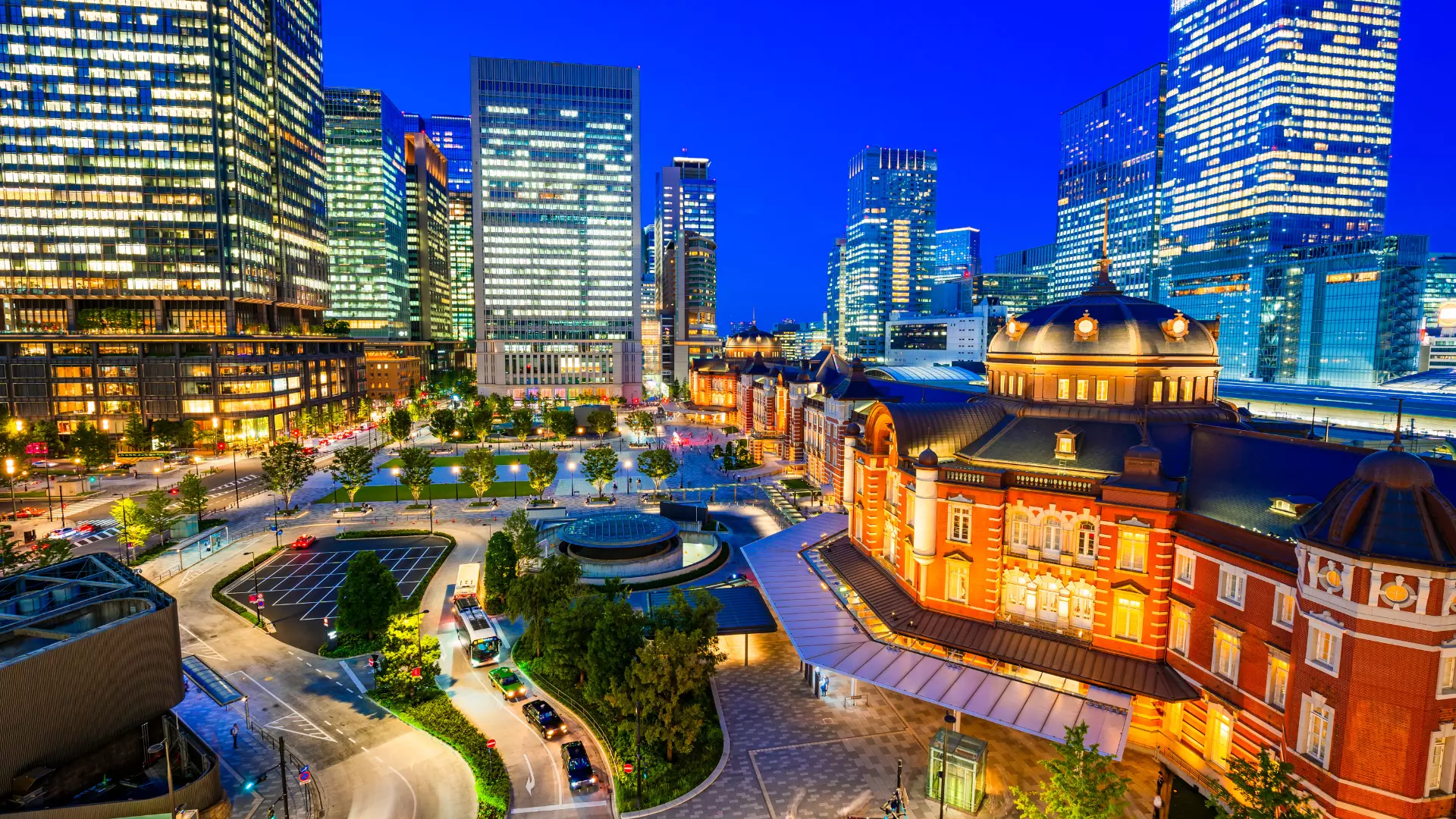
No. 1: Tokyo Station
The first place goes to the well-known Tokyo Station. As Japan's largest terminal station, it has excellent access to the Shinkansen, conventional train lines, and subways, making it extremely convenient for traveling both domestically and internationally. It is adjacent to business districts such as Marunouchi and Yaesu, and many people have their workplaces within walking distance.
In addition, there are plenty of commercial facilities such as Gransta Tokyo and Daimaru Tokyo directly connected to the station, so you'll have no trouble finding great shopping or great food. The area is also extremely safe, and redevelopment has resulted in a sophisticated streetscape.
Although housing options are limited, it is possible to live in the surrounding areas of Nihonbashi, Kyobashi, Yurakucho, etc., making Tokyo Station your living area. The sense of security and comfort that comes from living in the center of transportation is what makes this area so popular with many people.
No. 2 Shinjuku Station
Coming in second place is Shinjuku Station, a massive terminal station boasting the highest number of passengers per day in the world. More than 10 lines, including JR, subways, and private railways, are available, providing smooth access to both the city and the suburbs. Its high level of convenience makes it convenient for all types of travel, from commuting to school and work to going out.
There are many commercial facilities around the station, such as Isetan, Lumine, and Bic Camera, so you will have no trouble finding something to buy. On the other hand, there are also quiet residential areas such as the Nishi-Shinjuku area and the area around Shinjuku Gyoen, so you can choose your living area.
Although there are some areas where you need to be a little careful about safety, there are many 24-hour facilities and streetlights, and crime prevention measures are improving every year. Shinjuku is the perfect station for an urban lifestyle, as it has all the necessary infrastructure.
No. 3 Shibuya Station
Shibuya Station, where youth culture and business areas converge, came in third place. Thanks to ongoing redevelopment, the area around the station has been transformed into a sophisticated streetscape. New commercial facilities such as Shibuya Scramble Square and Shibuya Stream have been opening one after another, and shopping, dining, and entertainment are all within walking distance.
On the other hand, areas a little further from the station include quiet residential areas such as Daikanyama, Nanpeidaicho, and Shinsen, making it suitable for those seeking a quiet lifestyle. There are also many lines that connect to the area, including the Tokyo Metro, Tokyu, and Keio Inokashira lines, allowing for easy access to various parts of central Tokyo without transfers.
For those looking to experience the excitement of urban life, Shibuya is the ideal base, a charming city that combines youth and sophistication.
No. 4 Ikebukuro Station
Ikebukuro Station is ranked 4th as a key transportation hub that also offers extremely convenient living. Served by not only JR lines, but also Tokyo Metro, Seibu, and Tobu lines, it also offers good access to Saitama. Large commercial facilities such as Seibu Department Store, Tobu Department Store, and Sunshine City are clustered around the station, making it an attractive place to enjoy shopping and gourmet food on a daily basis.
In recent years, the area has seen improvements in public safety and redevelopment, improving the quality of the living environment. Quiet areas such as Mejiro and Minami-Ikebukuro are within walking distance, making it popular with a wide range of people, from students to working adults and families.
The average rent is also lower than other major stations, making it a good value for money. It is a well-balanced area that combines the convenience of urban areas with the security of residential areas.
No. 5 Akihabara Station
Coming in fifth place is Akihabara Station, known as the epicenter of subculture. It is characterized by its unique streetscape lined with anime, game, and electronics retail stores, but it is also a hidden popular residential area despite being in the city center.
In terms of transportation, the area is easily accessible via the Yamanote Line, Keihin-Tohoku Line, Sobu Line, Tsukuba Express, and Tokyo Metro Hibiya Line, offering excellent access to various parts of Tokyo. There are also supermarkets, restaurants, and medical facilities around the station, making it extremely convenient for daily life.
The area around the station has been redeveloped and is safe. It's also close to educational and historical areas like Kanda, Asakusabashi, and Ochanomizu, making it a comfortable place to live for people of all ages. Akihabara, where convenience and unique culture coexist, is a recommended area for those who value individuality.
Search for a room
Only furnished properties with appliances are listed!
Recommended properties along the Yamanote Line
The Yamanote Line not only has excellent transportation access, but also has many areas with good living environments. It is convenient for commuting to the city center and has a wide range of surrounding facilities, making it popular with people living alone, students, and working adults.
Here we will introduce some particularly recommended rental properties along the Yamanote Line for those considering living alone for the first time or moving to a new place.
Cross Sugamo 4
Cross Sugamo 4 is a cost-effective shared house property located just a 7-minute walk from Sugamo Station on the Yamanote Line and Toei Mita Line, and a 12-minute walk from Otsuka Station on the Toei Mita Line.
Sugamo Station has good access to Ikebukuro, Otsuka, and Komagome, making it a convenient location for commuting to work or school. The surrounding area is also home to the Sugamo Jizo-dori Shopping Street, supermarkets, convenience stores, and restaurants, so you'll have no trouble with daily life.
The property comes fully furnished and with appliances, and the rent is 48,000 yen. The appeal is that you can move in with low initial costs. The common areas are also kept clean, making it safe for women living alone.
Furthermore, the rent includes utilities, and Wi-Fi is available, making it a highly practical property suitable for short-term, medium-term, and long-term stays. This property is ideal for those who want to live in a quiet area but do not want to compromise on access to the city center.
Cross Mejiro 1
" Cross Mejiro 1 " is a popular shared house located in the Mejiro area, which is also known as an educational area.
The nearest station, Mejiro Station, is one of the safest areas on the Yamanote Line, and is characterized by its calm neighborhood. It's also highly convenient, being just one stop from Ikebukuro Station, making it an excellent base for commuting to school, work, or outings.
The property is located an 11-minute walk from Ikebukuro Station and comes fully furnished with appliances and utilities included, making it a safe and comfortable place to live alone for the first time. The shared kitchen and lounge space are kept clean and are highly rated for their comfort.
There are cafes, bookstores, and supermarkets in the surrounding area, allowing for a quiet and cultural lifestyle. The rent is also relatively low within the Yamanote Line area, making it a great choice for those who prioritize value for money. This property is perfect for those who want to live in a calm and secure environment.
Cross Nishi-Nippori 1
Cross Nishi-Nippori 1 is an attractive shared house property located an 8-10 minute walk from Nishi-Nippori Station on the Yamanote Line, with excellent access to multiple lines.
The Keihin-Tohoku Line, Chiyoda Line, and Toneri Liner are also accessible, allowing for smooth travel to major areas within Tokyo. Nishi-Nippori is a quiet area that retains its traditional downtown atmosphere, yet is home to a variety of supermarkets and restaurants, making it extremely convenient for daily life.
The property is a fully private room equipped with furniture, appliances, and Wi-Fi, and the common areas are also well-maintained, making it popular with women. It offers ideal conditions for those who want to live near the city center while keeping initial costs down. The environment is perfect for those new to share houses, allowing them to live safely and comfortably, making it the perfect property for those making their first move to living alone.
Residence Inn Meguro 117
Residence Inn Meguro 117 is a fully furnished apartment property located just a 6-minute walk from Fudomae Station on the Tokyu Meguro Line, an 11-minute walk from Meguro Station on the Tokyo Metro Namboku Line and Toei Mita Line, and a 13-minute walk from Gotanda Station on the JR Yamanote Line.
Meguro Station has good access to central Tokyo areas such as Shibuya, Ebisu, and Gotanda, making it a convenient location for commuting to work, school, and shopping.
The surrounding area is a quiet residential area, but it is also within walking distance of stylish cafes and restaurants, as well as the nature-rich Meguro River and Rinshi no Mori Park, making it a great place to live. The property has a compact layout for one person and is pre-furnished with furniture and appliances, significantly reducing the hassle of moving.
Security has also been taken into consideration, and the facilities are designed with women in mind. This room is recommended for those who want to start a stylish and comfortable life in the city.
summary
The Yamanote Line covers major areas of Tokyo and has many "livable stations" with excellent living environments and convenient transportation. From well-balanced stations such as Gotanda, Komagome, and Nishi-Nippori, to large terminals such as Tokyo, Shinjuku, and Shibuya, the line offers a wide range of options to suit your lifestyle and commute destination.
Furthermore, by utilizing furnished apartments and shared houses, you can reduce initial costs and live comfortably on your own. For those who want both good access and ease of living, cities along the Yamanote Line are the ideal choice.
This article has provided useful information about living along the Yamanote Line. If you are considering moving, please use this as a reference and search for Yamanote Line stations.

